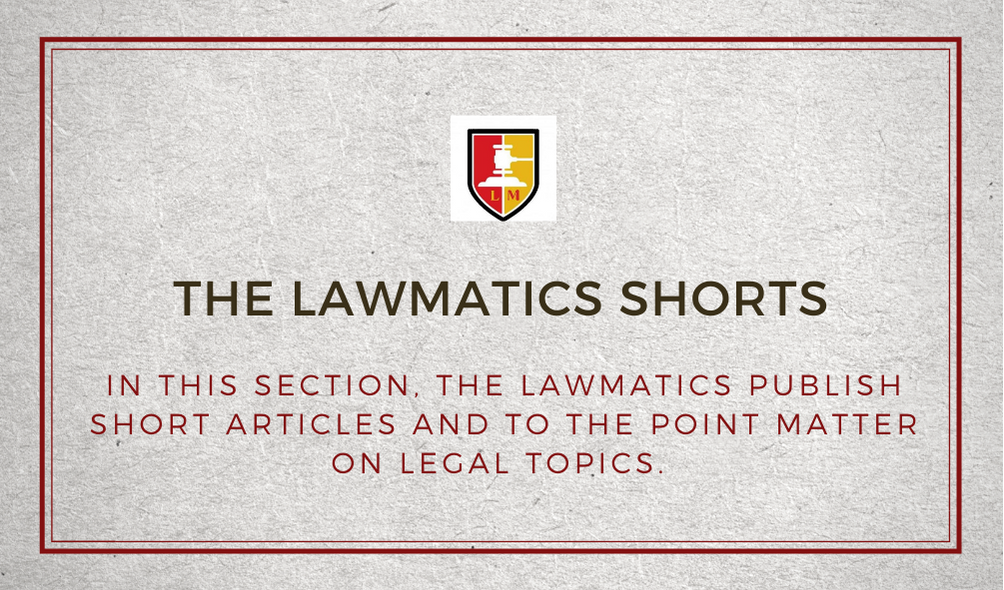
In Narayan Sai case, Supreme court denied the furlough to the Narayan sai who was convicted for rape and is in prison. Generally, furlough is confused with parole. But both terms have different meaning and applies in different conditions. So, what does “Furlough” mean in criminal law and what are the differences between “Furlough and Parole”?
This article is dedicated to this question.
Furlough and parole
Terms furlough and parole have different connotations. The parole and furlough rules are part of the penal and prison system with a view to humanise the prison system. These rules enable the prisoner to obtain his release and to return to the outside world for a short prescribed period.
Furlough
In Dictionary of American Penology, by Vergil L. Williams ‘furlough’ is described as under “Furloughs are variously known as temporary leaves, home visits, or temporary community release. For decades, prisons have occasionally granted short furloughs to inmates who were suddenly faced with a severe family crisis such as a death or grave illness in the immediate family. Furloughs of that type are treated as special circumstances, and often the inmate must be accompanied by an officer as part of the terms of the temporary release”.
Parole
Parole is the release of a very long term prisoner from a penal or correctional institution after he has served a part of his sentence under the continuous custody of the State and under conditions that permit his incarceration in the event of misbehaviour.
Definition of Parole
Parole is defined in the Concise Oxford Dictionary New Edition as “The release of a prisoner temporarily for a special purpose or completely before the expiry of a sentence, on the promise of good behaviour; such a promise, a word of honour”.
Black’s Law Dictionary Sixth Edition defines it as “Release from Jail, prison or other confinement after actually serving part of sentence; conditional release from imprisonment which entitles parolee to serve remainder of his term outside confines of an institution, if he satisfactorily complies with all terms and conditions provided in parole order.”
Historical Perspective of Parole
Historically ‘parole’ is a concept known to military law and denotes release of a prisoner of war on promise to return. Parole has become an integral part of the English and American systems of criminal justice intertwined with the evolution of changing attitudes of the society towards crime and criminals. As a consequence of the introduction of parole into the penal system, all fixed-term sentences of imprisonment of above 18 months are subject to release on licence, that is, parole after a third of the period of sentence has been served.[1]
Object of Parole
Release on parole is a wing of the reformative process and is expected to provide opportunity to the prisoner to transform himself into a useful citizen. Parole is thus a grant of partial liberty or lessening of restrictions to a convict prisoner, but release on parole does not change the status of the prisoner. Rules are framed providing supervision by parole authorities of the convicts released on parole and in case of failure to perform the promise, the convict released on parole is directed to surrender to custody.
Difference between Parole and Furlough
Furlough’ and ‘parole’ are two distinct terms now being used in the Jail Manuals or laws relating to temporary release of prisoners. These two terms have acquired different meanings in the statute with varied results. Dictionary meanings, are not quite helpful.
Supreme court in State of Haryana & Others vs Mohinder Singh (2000), differentiated both terms very precisely when it stated that-
“It would be thus seen that when a prisoner is on parole his period of release does not count towards the total period of sentence while when he is on furlough he is eligible to have the period of release counted towards the total period of his sentence undergone by him.”
Apex court further differentiated both terms as-
(i) Both parole and furlough are conditional release.
(ii) Parole can be granted in case of short-term imprisonment whereas in furlough it is granted in case of long-term imprisonment.
(iii) Duration of parole extends to one month whereas in the case of furlough it extends to fourteen days maximum.
(iv) Parole is granted by Divisional Commissioner and furlough is granted by the Deputy Inspector General of Prisons.
(v) For parole, specific reason is required, whereas furlough is meant for breaking the monotony of imprisonment.
(vi) The term of imprisonment is not included in the computation of the term of parole, whereas it is vice versa in furlough.
(vii) Parole can be granted number of times whereas there is limitation in the case of furlough.
(viii) Since furlough is not granted for any particular reason, it can be denied in the interest of the society.
Principles to grant Furlough
In the recent judgement, The State Of Gujarat vs Narayan @ Narayan Sai @ Mota Bhagwan Asaram @ Asumal Harpalani (20 October, 2021), Honourable court formulated principles for parole and furlough. The principles are thus:
(i) Furlough and parole envisage a short-term temporary release from custody;
(ii) While parole is granted for the prisoner to meet a specific exigency, furlough may be granted after a stipulated number of years have been served without any reason;
(iii) The grant of furlough is to break the monotony of imprisonment and to enable the convict to maintain continuity with family life and integration with society;
(iv) Although furlough can be claimed without a reason, the prisoner does not have an absolute legal right to claim furlough;
(v) The grant of furlough must be balanced against the public interest and can be refused to certain categories of prisoners.
Thus, furlough and parole have different meaning and applies in different cases and circumstance.
[1] Poonam Lata vs. M.L. Wadhawan and others (1987 (3) SCC 347)

